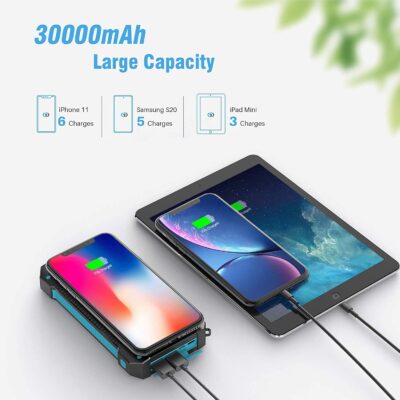

If this all seem s complicated, GTIS power systems can help you with those calculations. You also need to make sure the wire you choose will not overheat, degrading the insulation and becoming a safety hazard. Knowing the length and gauge of the cable you can calculate the resistance and multiply by the amperage to calculate the voltage drop.

Knowing the cable length, we can look up the cable size needed to stay below our resistance loss target. Total length of cables both (+) positive and (-) negative.Maximum continuous current – which allows us to calculate the maximum allowable cable resistance.2% loss means a voltage drop in the wires of: If this sounds low, remember that the loss gets counted twice, when you’re charging the battery, and again when you discharge it. A good target to design to is 2% or less of a loss. Battery wire size is often driven by power loss in the wires. You may be asking yourself, “How do I figure out how big the wire is supposed to be?”, and “How far can I run it?” There are two considerations, safety, and power losses. (see image.) Discover LFP batteries deal with the problem by using a data connection between the Battery Management System (BMS) inside each battery and actively even out the load when they are in parallel. SimpliPhi requires you use equal length wires for each string tied to a large buss bar to keep the resistance as even as possible. LFP batteries have much lower internal resistances, but they can have the same problems with too many parallel strings. For even larger capacity, use individual 2V cells of 800Ah or more allow for a much larger battery while still limiting to 3 or less strings. If you don’t have an AC charger available you probably can use the charge controller you’ve got and a couple panels rigged up to charge one battery at a time.Ī 48V system will use smaller wires and still have much lower resistance losses because the amperage is much lower. That way none of them will be overcharged while the others “catch up.” Fully charge all batteries individually first, then hook them together. Top Off Each Battery Before Physical assembly!īefore assembling multiple batteries into a battery bank it is very important to get all the individual batteries to the same charge level. The Batteries with the shorter cable length will carry more of the load and wear out faster. If you wire your batteries in parallel the way it’s shown on most schematics and on many websites, it is electrically correct, but the resistance is unequal to the different batteries. The wiring harness should give each battery the same length of cable of identical size and the same number of connectors to go through.

Proper Cabling Practice is important to keep your batteries in balance Only connect at the top and bottom of the strings.
POWER BANK SOLAR CELL SIZEWISE SERIES
When doing both series and parallel, do not cross connect the batteries in the middle of the series strings. Sticking with 3 parallel strings minimizes the problem, but a single string is best. Even worse, once you’ve got a weak battery, it can suck the life out of the others and make the whole bank perform worse than if it wasn’t there at all. Over repeated charge/discharge cycles the differences add up and wear out batteries before their time. The above limitations are important to follow because variations from one battery to the next cause the current to not distribute equally.

For example putting 3 identical 12V 100Ah batteries (1200Wh each) in parallel makes a 12V 300Ah battery bank. Putting two or more identical batteries in parallel splits the amperage and amp-hours between them while keeping the same voltage.


 0 kommentar(er)
0 kommentar(er)
